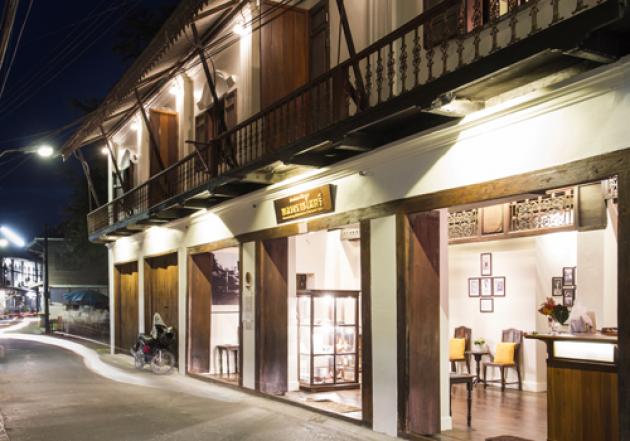In praise of the 'Chantaboon' model

Thailand wins Unesco Order of Merit for conversion of historic inn in Chanthaburi
The United Nations Educational, Scientific and Cultural Organisation has chosen Baan Luang Rajamaitri, the 150-year-old Sino-Portuguese former residence of a Thai aristocrat, which has been converted into a chic historic inn and local museum in Chanthaburi for an “Award of Merit” in the 2015 Asia-Pacific Heritage Award for Cultural Heritage Conservation.
Beating 36 projects, Baan Luang Rajamaitri is among 12 winning projects from five countries, – India, China, Lao PDR, Australia and Thailand – announced on Tuesday morning. Thailand has so far won 12 awards in this category, among them the restoration of the main chedi at Wat Prayoon in Thonburi (Award of Excellence) in 2013 and Samchuk community and old market district, Suphan Buri (Award of Merit) in 2009.
The conservation of the Sree Vadakkunnathan Temple in India’s Kerala won the year’s top prize – the Award of Excellence. Sdaring Xieng Thong Temple in Luang Prabang won the Award of Merit and became the first project in Lao PDR to receive the Unesco Asia-Pacific Heritage Award.
According to Unesco, the adaptation of the former residence of local aristocrat Luang Rajamaitri into a 12-room heritage inn and museum sparked an awareness about heritage conservation among a wide range of stakeholders in Chanthaburi and catalysed a larger movement to revitalise the once-declining 150 year-old riverfront town. The enlistment of more than 500 shareholders to invest in the transformation of the house created an innovative new social enterprise model for urban heritage conservation. The well-executed restoration and adaptive reuse of the Sino-Portuguese building has turned it into the linchpin of an increasingly popular cultural tourism destination. The project sets an example for other old communities in Thailand of successful community-based conservation practice now known as the “Chantaboon Model”.
Tim Curtis, chair of the jury and chief of Unesco Bangkok’s Culture Unit, said he was impressed with the quality of the entries received this year as well as the geographical expanse they covered, showing that the awards’ message of the importance of cultural preservation is gaining momentum in the region.
“The jury was very pleased with this year’s submissions, which included fascinating projects from across Asia-Pacific. This reflects a continuing trend over the years where we are seeing a broader diversity of typologies being submitted to the Awards coming from a wider geographical spread,” Curtis said
He added that he was pleased with the significant increase in the number of entries in the New Design in Heritage Contexts category – awarded this year to Port Arthur Penitentiary in Tasmania, Australia – which he said shows “how design innovation can support conservation efforts and enhance the heritage value of a place.”
The Award of Excellence for the Conservation of Sree Vadakkunnathan Temple, Thrissur in Kerala, India recognises the remarkable conservation effort undertaken at the sacred site which employed age-old rituals and conservation techniques drawn from vastu shastra, an Indian traditional science focusing on architecture and construction. As such, the tangible attributes of the temple are inextricably linked with its intangible heritage which dates back generations, thus ensuring that “spirit of place” resonates throughout the site.
For more information about the Unesco, AsiaPacific Heritage Awards for Cultural Heritage Conservation and this year’s winning entries can be found at: www.UnescoBKK.org/culture/heritage/awards,
RELATED





